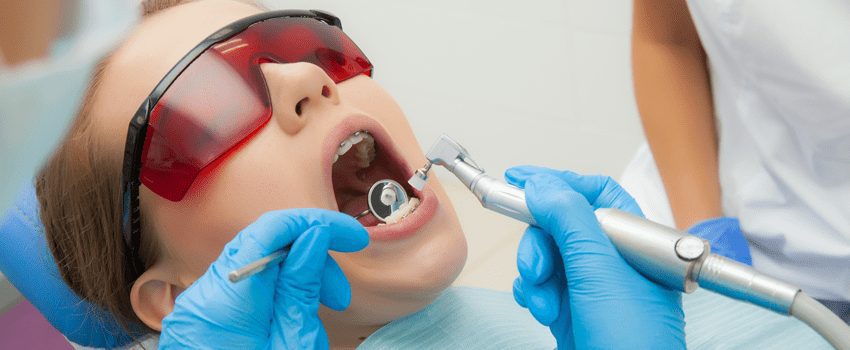Last week I asked the hygienist what was the most common question patients ask her. She paused a moment to think about it and then said, “Do I have any cavities?”
And that brings us to cavities. What causes them? How do we find them? How do we fix them? How can we prevent cavities from happening?
Cavities are also known as dental caries and they can lead to a series of sometimes problematic issues including tooth and gum infections. A cavity that becomes too deep can be accompanied by considerable tooth pain and if allowed to progress can result in losing the affected tooth.
Dental decay is caused primarily by Streptococcus mutans (SM) and lactobacillus. The bacteria use refined sugars, such as those found in soda, sweetened juices, candy and other desserts, and quick digesting grains (such as wheat) and creates acid that destroys the tooth from the enamel (outer part of the tooth) to the dentin (inner part of the tooth). It seems strange to think that tooth decay is actually a communicable, infectious disease and it will also spread from one tooth to the next if you give it the chance. It can also be spread to another person by kissing. Babies do not have these bacterias until their birth when they are exposed during the birthing process and exposure outside the womb during the first few months of life.
Another important cause of decay is a poor diet (refined sugars and grains top the list). A poor diet will cause systemic changes that are not good for our overall health, including our dental health. These changes can make you much more susceptible to the surface acid attack mentioned above. Many holistic dentists, including Dr. Strietzel, are confident that diet is the biggest factor in our dental health or problems.
When dental decay starts, you often cannot feel it. Sometimes it can be seen or felt by a dental provider and sometimes it is found through taking x-rays of the tooth. X-rays show us cavities in between the teeth (distal and mesial) and visual examination shows us cavities that are on the other sides of the teeth (occlusal, lingual and buccal/facial). Once a cavity becomes deep enough to pass through the dentin and reaches the nerve in the pulp of the tooth, the tooth may require a root canal to clean out the infection. If the cavity continues to grow larger the infection spreads into the jawbone and turns into an abscess. This becomes incredibly painful. Usually, the abscess is first treated with an antibiotic and once the infection is quelled, the only options for the tooth are a root canal or an extraction. See our blog on missing teeth to learn more about what happens once a tooth is extracted. That’s a good reason to address cavities before they are allowed to progress into more major (and more expensive) events.
Smooth surface decay develops when regular flossing and brushing is missing and as a result, bacteria is allowed to grow creating plaque on the smooth, flat surfaces of the teeth and in between the teeth. The plaque, if not brushed or flossed away, turns into tartar which hardens on the teeth. Tartar is also called dental calculus.
Occlusal decay, also known as pit and fissure decay, happens on the biting surface of the tooth where grooves and pits exist. These grooves and pits are more prone to cavities because they are more difficult to clean. These cavities can easily become severe and problematic if ignored. In treating children, dentists will use sealants on these pits and grooves in order to protect the tooth from developing cavities.
People who have gum recession are more likely to develop root decay. When the gum tissue recedes, it can expose the root of the tooth, which is more vulnerable to decay. The decay forms on the surface of the root.
The standard treatment for a cavity is to get a filling. Fillings can be either amalgam (mercury) or composite. Our office chooses not to use amalgam for our fillings. A composite material is made up of plastic resin (we use BPA free) and crushed glass to make them stronger. Older fillings may be made up of ceramic and plastic. A filling can involve one to five surfaces of a tooth.
In most cases, the dental assistant will place a topical anesthetic in the area where the dentist will do an injection of either septocaine or lidocaine. Once the injection is done, there will be a short wait of 5-10 minutes for the numbing agent to take full effect before the dentist can begin working on the cavity. Not all fillings require numbing and if a filling can be done without numbing, the dentist will give you the option not to numb. During this time the dental assistant will offer headphones for you to pick some music you like to listen to and some lip balm, which she will apply to your lips periodically throughout the procedure.
When you are ready the dentist will begin by drilling out the decay. Once he is finished with this step, he will use a special stain to indicate if there is any further decay in the tooth and will drill further if necessary. The dentist will then apply an etchant to prepare the tooth for the bond and composite material. Our office disinfects the area using ozone to help control infection, before drying the tooth, applying bond material, and then applying the composite material (in a shade as close to your tooth color as possible). The composite is tightly packed, often in layers. A curing light is used to harden the composite in between each layer.
Once the filling is placed, the dentist will grind away excess material and shape the tooth. The bite will then be checked using a type of carbon paper to indicate where the surface of the tooth may be hitting too hard or uneven. Any necessary adjustments will be made then the dentist will floss around the tooth to make sure flossing is easy and that there is no excess resin material in between the teeth. This is especially important when the filling is in between the teeth. The last thing will be polishing the tooth so it is smooth and your bite may be checked one more time.
At the end of your appointment, you will be given instructions, including no hot or cold food or beverages for at least an hour. You may be numb up to four hours following your appointment so you will be advised to eat carefully since if you bite your tongue or cheeks you may not be aware of it due to the numbness.
Of course, ultimately you really want to completely avoid having a cavity altogether. The best way to prevent tooth decay is with a healthy diet with low or no refined sugars, and daily brushing and flossing off all your teeth. It should take no less than two minutes to brush your teeth. There has been evidence that electronic toothbrushes are more effective than manual brushing and some electronic toothbrushes can be used with an app that helps you spend the right amount of time brushing, lets you know if you are brushing too hard and shows you areas where you did not spend enough time. Sonicare has an excellent brush.
Drinking more water can help wash away bacteria that promotes tooth decay. If you are a mouth breather or if you suffer from the dry mouth you are more prone to decay and drinking more water can help mitigate this. If you are prone to have higher bacteria levels, your dentist may recommend an antibiotic mouthwash be used to keep bad bacteria in check. Dental Sealants can protect teeth from cavities. Many dentists do fluoride treatments or recommend fluoride toothpaste. Our office emphasizes a healthy diet over the use of fluoride. Regular checkups and cleanings (twice a year or more if you have periodontal issues) should be a part of your preventive care. If you are experiencing pain or discomfort while chewing, sensitivity to hot or cold, sudden pain, sensitivity to sweet or sour or you don’t feel anything different but you see something different, such as a change in color of a tooth or a spot on a tooth, you should make an appointment with your dentist to be evaluated and to address any pending issue that may be developing before it becomes too serious.





